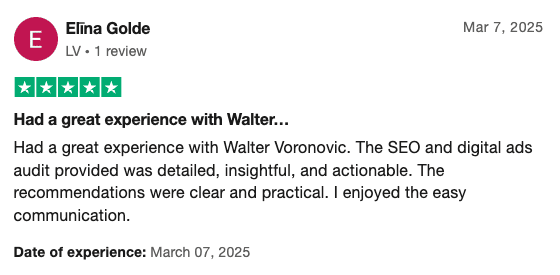Free SEO & PPC Audit for Your SaaS or E-commerce Business
Sign up for a Free SEO & PPC Audit for Your SaaS or E-commerce Business.
Get actionable, personalized advice on improving your ROI without spending more on marketing.
In the free audit, I’ll personally go through your:
- SEO – Google Search Console, On-page & Off-page optimization to find areas of improvement;
- Meta Ads account (Facebook & Instagram) to provide actionable advice on how to improve your digital ad spend ROI;
- Google ads account to uncover hidden ROI boosting opportunities.
Enter your name & email in the form below to jumpstart the process:


I created my first website/blog in 2013.
Since then, I have worked on projects of various levels, from creating the first offer to a turnover of several million per year.
Currently, I’m open to working with a select few clients in these areas:
- SEO – audit, strategy, keyword research, on-page and off-page optimization;
- Meta / Facebook / Instagram – ad setup / management (media buying) / strategy / ad creative preparation;
- Google / Youtube – ad setup / management (media buying) / strategy / ad creative preparation;
Get in Touch!
Email: walter@waltervoronovic.com
Phone: +371 292 47 650
WalterVoronovic.com, SIA / LLC
Reg. nr. 40203401983
“Siguļi 2”, Siguļi, Carnikavas pagasts, Ādažu novads, LV-2163